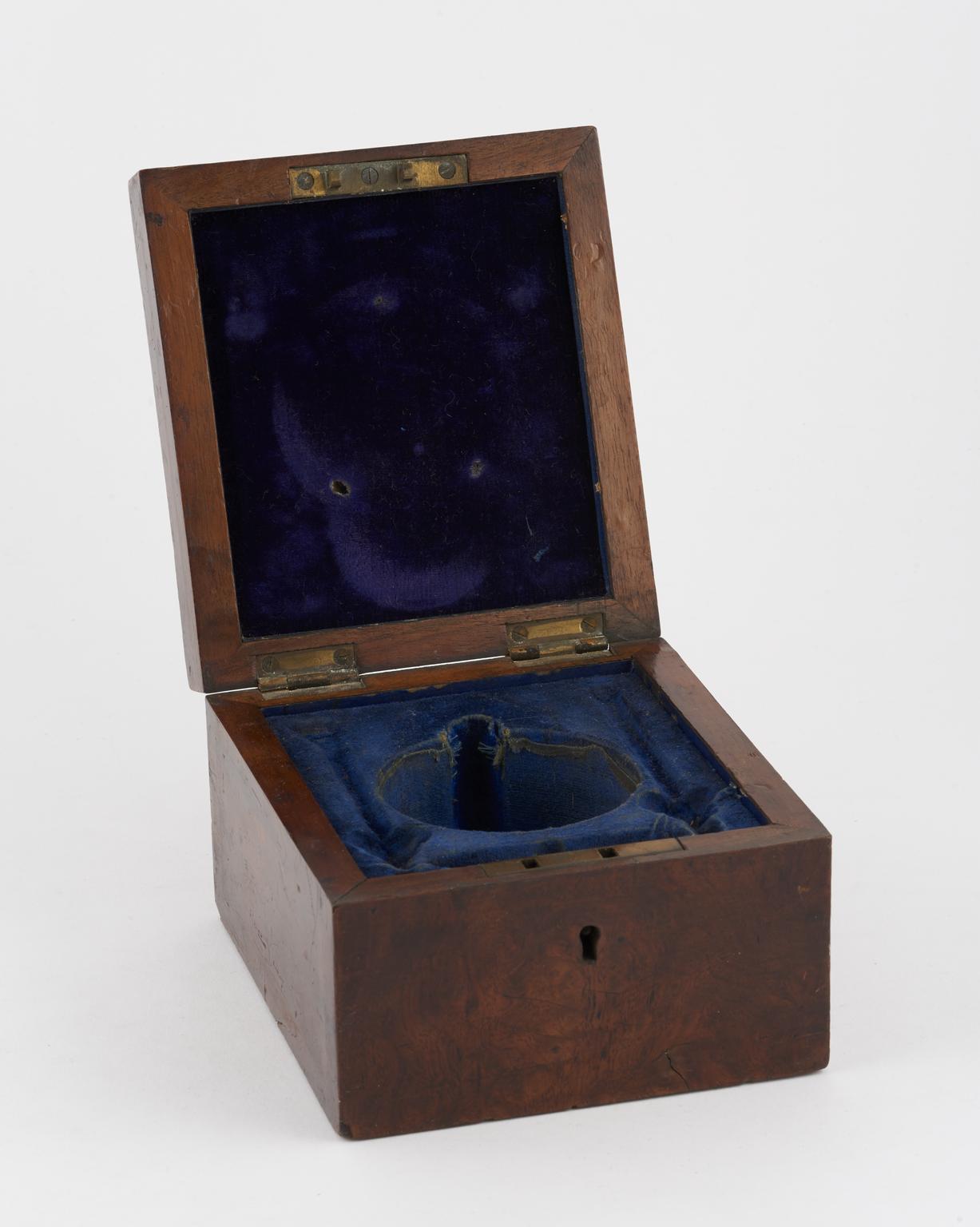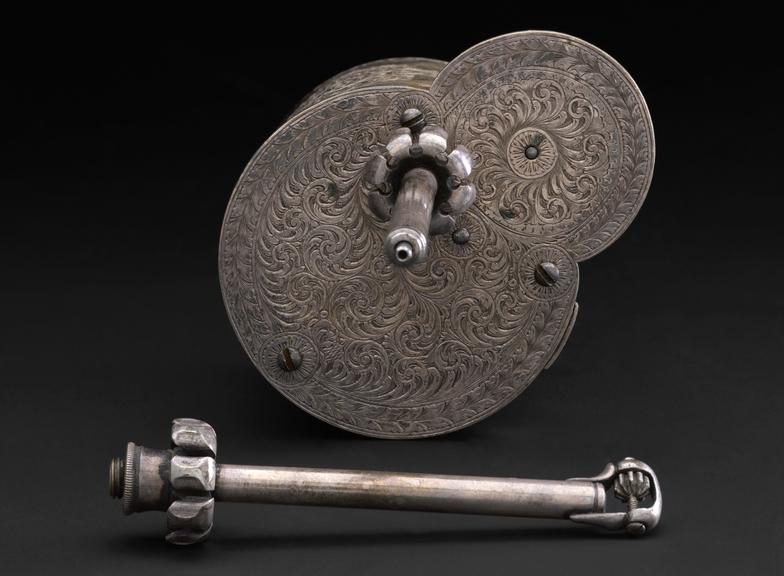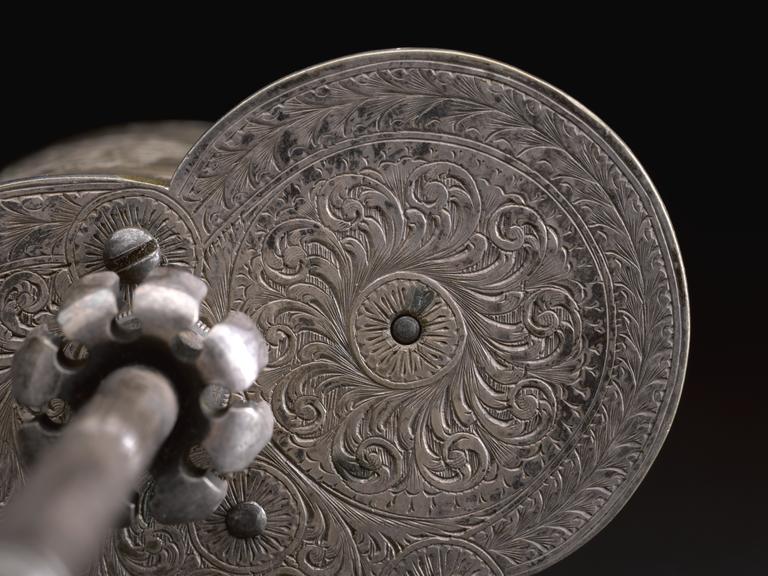Harrington's clockwork dental drill
Harrington's clockwork dental drill, the "Erado", no.124, 1864-1870




Harrington's clockwork dental drill, the "Erado", in fitted case, no.124, 1864-1870
This dentistry tool, known as ‘Erado’ – or ‘I scrape out’ in Latin - was invented by British dentist George Fellows Harrington in 1864 to improve the method of removing tooth decay. It was a drill run by a clockwork mechanism, running for 2 minutes after being wound-up. This meant the drill could continuously rotate, improving the speed of the procedure. Harrington improved his design, introducing interchangeable heads and contra-angle handpieces – which meant the tool could be used at a more accessible angle to the patient.
However, the success of the drill was short-lived. It was noisy and awkward to control and was quickly overtaken by the invention of the foot engine in 1872. American dentist James B. Morrison (1829-1917) utilized the foot operated mechanism of a treadle sewing machine to create a foot operated drill which could achieve 2000 revolutions per minute (RPM). This technology was also overtaken once the first electric dental drill was patented, in 1875 by George Green.
Harrington's clockwork dental drill, the "Erado", no.124, 1864-1870
Drill attachment with claw-type ending for Harrington's clockwork dental drill, the "Erado", no.124, 1864-1870
Drill attachment with point-type ending, incomplete, for Harrington's clockwork dental drill, the "Erado", no.124, 1864-1870

Walnut case for Harrington's clockwork dental drill, no.124, 1864-1870



